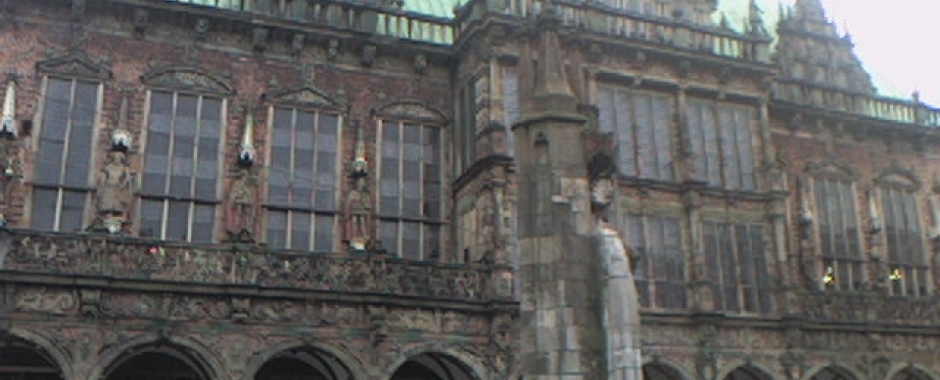
In the medieval Europe, the landlords and the Royal family members lived in the castles, peasants and town villagers lived nearby. The protector of the city were the knights.
A known German legend of a knight - The Bremen Roland, a paladin of the first Holy Roman Emperor Charlemagne and a hero of the Battle of Roncevaux Pass, erected in 1404. The statue of Roland stands in the market square in Bremen, Germany so called "Rathausplatz", holding his unsheathed legendary sword "Durendal" (the sword of Justice) that he received from Charlemagne and the imperial shield.
His shield bears a double-headed eagle sharing a crown (It is not the same as the official coat of arms of Germany) The old German description on the shield was added in 1512,
„Freiheit tu ich euch öffentlich kund / die Karl und mancher Fürst fürwahr / dieser Stätte gegeben hat / dafür danket Gott, das ist mein Rat!“
The roughly translatation, Please keep in mind and thank God for the freedom that is given to this place by Karl and many other sovereigns.
According to the legend, Bremen will remain free and independent as long as Roland stands guarding the city. Allegely there is a second Roland statue which is kept hidden in the town hall's underground vaults, so in any circumstance, a replacement could be immediately made. However, the interpretation of the statue is different from a folk tale of the local people.
The secret place is in the council wine cellar, so called "Ratskeller" in German, located in the Townhall of Bremen, built in 1405. One of the German oldest wine cellar from Rüdesheim am Rhein is stored here. Today, it is known as a traditional tavern where travelers come to have Food &drinks. As it is hidden, you will certainly not find the second Roland.
Have a knight(nice) day!










